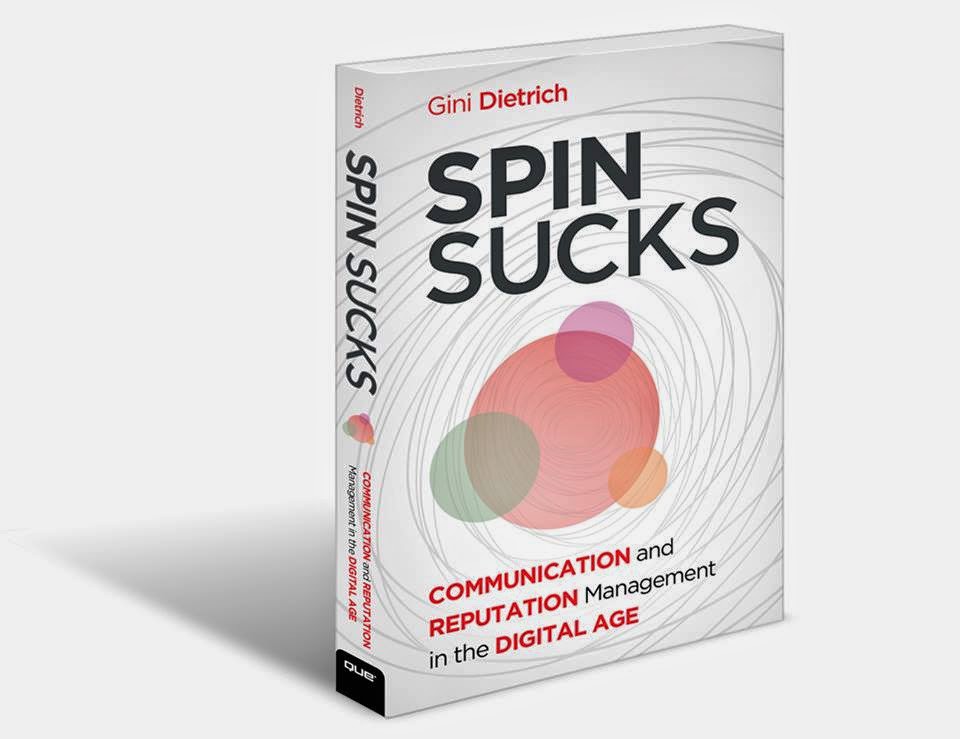Want Your Brand Fabric to Last? Skip the Spin Cycle

Posted By Sue Parente on September 04, 2015
It’s Labor Day weekend and school’s about to start. Have you finished your summer reading yet? No? Well I can help you with the SparkNotes (do they still have those?) for a current industry read called Spin Sucks: Communications and Reputation Management in the Digital Age by Gini Dietrich.
The good news for all you procrastinators is that it’s a quick read, fewer than 150 pages, and it’s easy to scan for the information that interests you most. Want to know more about how Google’s algorithms have evolved from “Panda” to “Penguin”? Check out Chapter 2. Curious to know what constitutes high-quality content, you’ll find that on page 35. How does SEO work? Flip to page 114.
But for me, the most important message of this book is revealed in the first chapter. That’s where Dietrich debunks one of the biggest PR myths – that somehow through distraction, smoke and mirrors or hocus pocus -- otherwise commonly known as “spin” -- companies can trick their customers into loving their products.
While “sex” may be what sells, it doesn’t last. Dietrich gives loads of examples where the scandalous, provocative, outrageous, and unconventional win public attention every time. (Case in point, today’s Boston Globe top headline was all about the most scandalous scandal of all time: “Deflategate!”)
But the idea that the attention-getting headlines can somehow build or sustain brand value is a false notion. No amount of headlines will help a product or service that doesn’t pass muster.
We’ve all heard the old (misguided) adage: “Any PR is good PR.” Ms. Dietrich rightly points out that, in fact, the only good PR is PR that builds good, old-fashioned trust with customers, the kind that is forged over time and made of real, concrete experiences. Now, those experiences don’t have to be boring, white bread experiences – they just have to be true to the ethos of the company and its brand value.
An example Dietrich gives is an online recipe database called Foodily. Foodily found a way to engage its customers, not by trying to prove how great its recipe database is, but by inviting people to share their favorite mealtime memories. They created an experience that was about the customer, giving them a reason to interact with the company and other customers that was simple, real and valuable, with no strings attached.
Another important point Dietrich hits on early in the book is the value of studying fiction writing to help tell company stories. She’s not advocating making up stories, but rather employing the formula of fiction to engage an audience. Stories are human beings’ natural way of sharing information. But it’s important to know what makes a good story. An idea, Dietrich tells us, isn’t enough to make a story. We need to enhance it with themes and concepts that challenge us intellectually and emotionally.
For example, no one really cares about a new car model, but make it a car model that puts its employees and customers on the side of sustainability and social causes, and now we’re talking. The story is enhanced by pointing to opposing forces determined to defend the status quo. Suddenly the story is about the struggle for innovation that can transform our world and our role in that struggle. That’s not spin, that’s just good storytelling that helps the audience understand why they should care.
In the end, as Dietrich’s book serves to highlight, the public nature of our digital world will ultimately decide a company’s story, revealing its true colors, so one might as well stick to those colors and avoid fading through repeated spin cycles.



